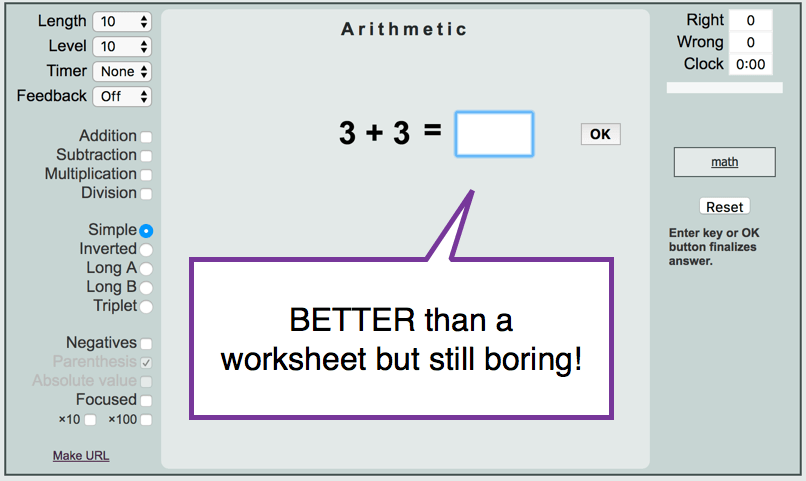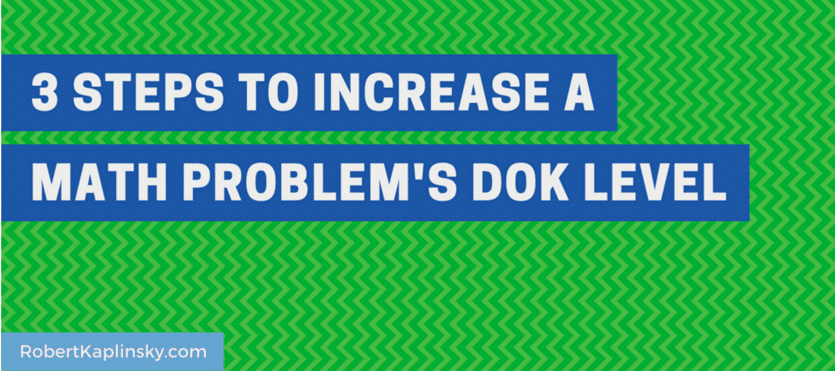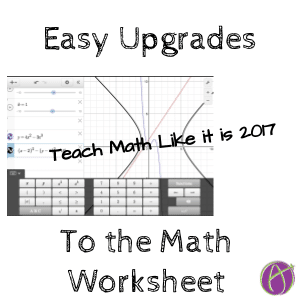Upgrade the Worksheet from 1900
I recently blogged about a student’s homework assignment that was 36 DOK 1 math problems. I looked up math homework from 1900 and it was pretty much IDENTICAL! So what are some easy things we can do to teach like it is 2017 and not 1900?
1. Use Bitmoji

Maybe it seems dumb, but put Bitmoji’s on things. The worksheet I saw the student doing had ZERO elements of student engagement. Not even a silly clipart to attempt to make it more fun. Even amusement parks have a theme to their roller coasters and those should be fun just by themselves. So old school is we would put clipart or stickers on things. In 2017 consider making it more personal. YOU are the student’s teacher. Put a little of yourself into the activity. Notice my Bitmoji at least seems to be encouraging you to try!
2. Assign Fewer Problems
If you know it, you don’t need 36 problems. If you don’t know it you should not practice doing it wrong. When students have a negative association with something they will not want ever see it again. If we want students to love our subject we should help them to feel successful. Doing a worksheet of work and then figuring out you did it wrong is soul sucking.
Instead of giving every student 30 problems whether or not they need it, try “practice as many problems as you need to show you understand it.” This number should vary for each student. I always did additional math problems from what was assigned because I felt I needed the practice. When I switched to assigning 3 – 5 problems (I had them on quia.com/web and they had to get 100%) the motivation of my more advanced students increased significantly. I was not insulting their intelligence by making them do practice they really didn’t need.
It makes sense that more practice makes you better, but that is not necessarily true. Practicing wrong is damaging. Doing more when you already get it just makes you dislike the subject. Different types of problems, challenges, creative thinking, non examples are better than a pile of problems that are just following the steps.
3. CHOICES
Choice is very motivating. “Choose 3-5 problems to practice.” Even if you want the students to do 30 problems, let them pick the 30. What happens with the problems they do? Who looks at them? What feedback do they get? With fewer problems, students can do more peer evaluation. One of the 8 mathematical principles is to “Critique the reasoning of others.” Diana Herrington has her math students choose 3 problems from the text and do them in Google Slides. This allows for feedback conversations that lead to improved learning instead of math problem burnout.
Choice Template: alicekeeler.com/mathconversations
4. Use Technology
It is not uncommon for me to hear “you can’t use technology in math.” I have been 1:1 almost my entire teaching career I can honestly say I do not know how to teach math without technology. Doing multiple problems and then finding out later you were wrong is not motivating. In fact, as soon as your brain thinks you’re done you’re less engaged in going back over the math problems. You want to capture students while they are still engaged and thinking about the math problem, tomorrow is too late. After all the problems are done is also too late. Question by question. Even better if the tech can give the student a tutorial if they get it wrong. In that moment the student got the problem wrong they have a high likelihood of wanting to know why and how to do it. The more time that passes from a student finishing a problem and getting feedback the less they care.
[tweet]For every DOK1 or DOK2 problem students should immediately know if they got the right answer.[/tweet]
At a bare minimum use technology to grade for you so you can spend your time encouraging students and increasing critical thinking. There are lots of great ways to use Desmos and other tools to change math instruction, but if you’re looking for a place to start with tech… give up the grading and class time giving out answers. Technology can give you data to better know what students are struggling with so you can pull students into groups to go over problems who need help rather than holding the students hostage who did understand the problems.
Anything with immediate feedback is better than a paper worksheet, but also look for things that are at least a little engaging. I don’t understand these math websites with a gray background. At least put a pig that dances on there!

Look at Kahoot, it’s a multiple choice quiz but students will run to class to do a Kahoot! Color, music, design matters! We know it improves engagement even if it’s the same exact math problems.
https://www.youtube.com/watch?v=5PlR_XidrrY
[tweet]Student engagement DOES matter![/tweet] That doesn’t mean it needs to be fun and games all the time.
Fun is an appropriate challenge that a student is interested in.
Personally, I find writing an essay fun if the topic interests me and I feel like I’m learning. Same assignment can also be busywork.
If you really do not have technology that your students can use, at a bare minimum give them all the answers. Practice should not be treated like a test that is graded later. “Here are the answers, when you’ve done 3 right in a row you can stop.”
5. Be Honest With Yourself
Will kids like this? Will they find it an interesting challenge or just something to crank out and get done? How likely are they to COPY it off the internet or a peer? If you know they are only doing it for the points or to avoid detention then they are going to be much more likely to cheat on it or avoid doing it. Just being willing to rethink the assignments is a great first step. Even if you do the same thing but take a moment to consider, maybe I should think of another way, that is a win!
6. Try Open Middle
Check out openmiddle.com for DOK2 and DOK3 math problems. Increase the critical thinking of the problems. Doing repetitive practice is not as helpful because students are just following steps and not really thinking about the concepts. Have students instead practice one or two problems with increased critical thinking. Spending time thinking will yield better math understanding than spending time doing.
Robert Kaplinksky has several blog posts on DOK for math. Check out this one in particular to help take those 1900 math problems and increase the critical thinking for them.

This one by Robert Kaplinsky is one of my favorites. The assignment asks students to show their multiple attempts. We need to move past getting the right answer as what we value. Literally, technology has replaced this skill. I can ask my phone answers to math problems, and students know this! So the skill in life really isn’t being able to find a correct answer but being able to THINK about math and understand it.









